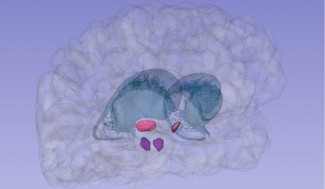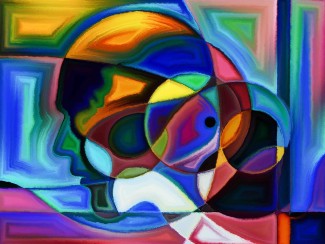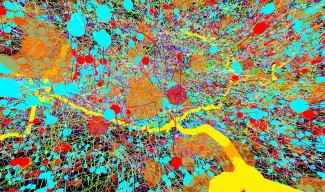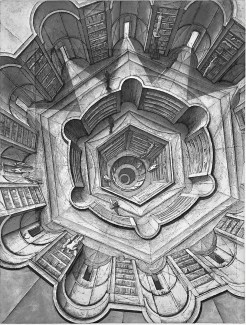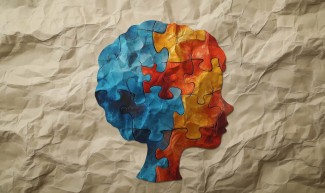Gait and balance disorders and the associated falls caused by Parkinson disease are a major public health problem.
Institut du Cerveau - ICM researchers recently showed that the pedunculopontine nucleus, a region of the brainstem, is implicated in the control of gait in humans and that its stimulation could reduce the disorders that can occur in Parkinson disease.
In Parkinson disease, the motor symptoms are due to the progressive death of neurons in a region deep in the brain that uses dopamine as their chemical messenger. These symptoms generally disappear with L-dopa tretment or, in certain cases, deep brain stimulation of the subthalamic nucleus (NST),a region implicated in the control of movement.
However, in advanced forms of the disease, medical or surgical treatments are less effective, and the patient begins to suffer from gait disorders, "freezing*" and falls, which lead to wheelchair use after a certain period of evolution. Recent hypotheses indicate that these gait and balance problems are perhaps caused by the death of neurons in the pedunculopontine nucleus (NPP), a brain region implicated in the control of gait and balance.
In order to define the respective roles of the NST and NPP in the motor disorders, Institut du Cerveau - ICM researchers used a multidisciplinary experimental approach1 involving electrophysiological recordings during the neurosurgery to place electrodes for deep brain stimulation.
Fourteen patients with Parkinson disease were trained to perform a task in which they imagined themselves walking down a hallway. The patients, divided into two groups, then underwent surgery to place electrodes in the NST or NPP according to whether they had resistant gait disorders or not.
The results confirmed the preponderant role of the NPP in gait control even if, under normal conditions, the two nuclei probably interact to adapt movements to the environment.
In a second study,2 the neurologists and neurosurgeons of the Pitié-Salpêtrière Hospital followed six patients with electrodes for deep brain stimulation implanted in the NPP. This double-blind study showed a decrease in "freezing" and falls in three patients and improved posture control. The patients also described improvement in their quality of life. This encouraging result should be regarded with prudence, however, since risks related to the technique were observed during the study.
This study confirms that deep brain stimulation of the NPP could improve gait and balance disorders in some patients with Parkinson disease. However, the intervention involves risks and cannot be performed in all patients. These preliminary results reinforce our knowledge of this region of the human brainstem and open the way to the development of new treatments for this important public health problem.
*Sudden and brief immobilisation usually accompanied by festination with the feet stuck to the floor.
Sources
1. The integrative role of the pedunculopontine nucleus in human gait. Lau B, Welter ML, Belaid H, Fernandez Vidal S, Bardinet E, Grabli D, Karachi C.
2. PPNa-DBS for gait and balance disorders in Parkinson’s disease: a double-blind, randomised study. Welter ML, Demain A, Ewenczyk C, Czernecki V, Lau B, El Helou A, Belaid H, Yelnik J, François C, Bardinet E, Karachi C, Grabli D.

